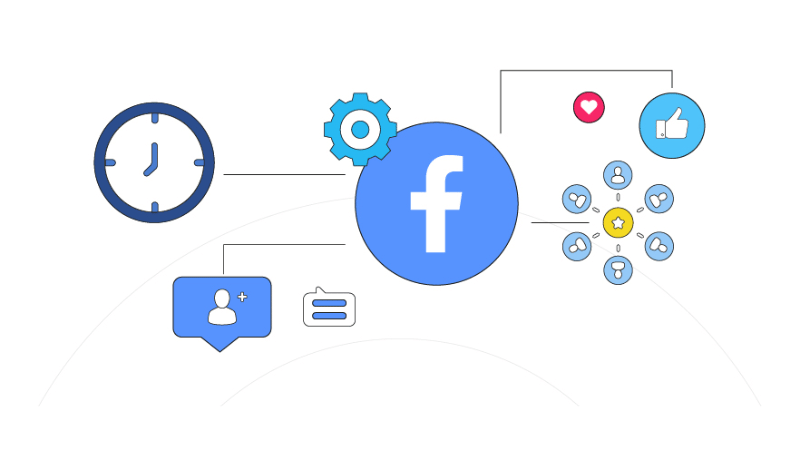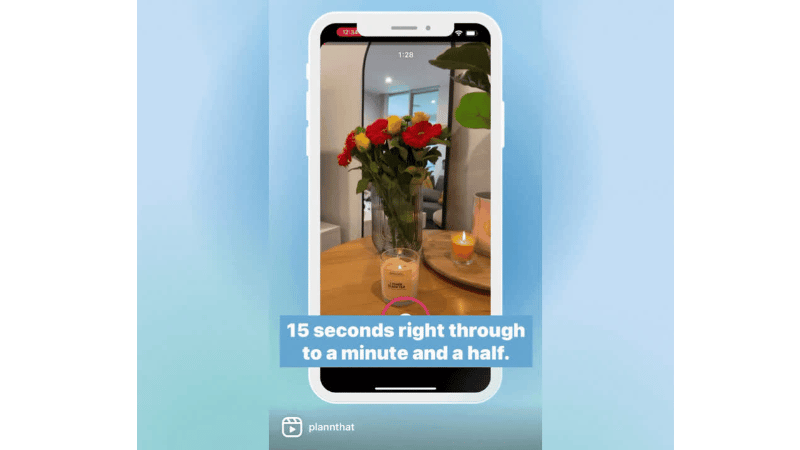In 2025, the Facebook Algorithm continues to prove its vital role in determining who sees your content and ads, and the way it “ranks” information has changed significantly compared to a few years ago. As Meta invests more deeply in Artificial Intelligence (AI), Machine Learning (ML), and user personalization, understanding how the algorithm works becomes mandatory if you want to achieve optimal performance.
In this article, Optimal Agency will analyze the current Facebook algorithm in detail: what type of content it prioritizes, how it selects ad targeting, the key changes compared to previous years, and how advertisers can leverage these changes to increase reach, engagement, and conversions. Let’s explore Facebook’s new operating mechanism and prepare a suitable advertising strategy right now.
Review of Facebook algorithm update phases
Over the years, the Facebook algorithm has continuously changed to meet new user behaviors and content trends. To help advertisers easily visualize the big picture, we will look back at each important phase and how each update affected content distribution and advertising effectiveness.

August 2025 update: Advanced AI content detection and expanded creator monetization
In this phase, Facebook applied a more advanced AI system to analyze content quality more deeply. This helps prioritize the distribution of posts genuinely created by humans, especially personal, valuable, or real experience-sharing content.
For example, if you are a creator posting behind-the-scenes videos of your daily work, the algorithm will prioritize them over videos created by AI but not clearly labeled. This update also expanded the monetization program, helping creators earn additional income from high-quality original content.
July 2025 update: Video optimization and Feed restructuring
Facebook continues to demonstrate its prioritization of video, especially video with good viewer retention. The new algorithm heavily assesses metrics like video completion rate, average watch time, and real engagement.
Example: A 30-second video where viewers watch 80% will be prioritized much higher than a 2-minute video where viewers drop off in the first 10 seconds.
Additionally, the Feed source was restructured to balance video and other post formats, helping users avoid content “overload.”
March 2023 update: 90-second reels and discovery surfaces

At this time, Facebook increased the length of Reels videos to 90 seconds and expanded more display placements to help users discover content. This was the phase where Facebook directly competed with TikTok.
Marketers will see entertaining videos, lifestyle content, or short tip-sharing prioritized for display more often.
June 2022 update: Adjustments to compete with TikTok
Facebook shifted its focus more strongly to entertaining, concise, and captivating content – the TikTok style. This forced advertisers and creators to change their creative mindset; instead of focusing on long posts, they had to switch to fast-paced content that captivates within the first 3 seconds.
April 2022 update: Instagram prioritizes original content
Since Instagram belongs to Meta, this change also impacted Facebook. Self-created content – for example, a video shot with your phone, not copied from another platform – will be distributed better. Creators who re-upload or repost old content from TikTok will see a clear reduction in reach.
February 2022 update: News feed renamed to feed
This was not just a simple name change. Facebook wanted to reduce the “news” element and increase the “connection” element. That led the algorithm to prioritize posts from friends, family, and the community over those from large news pages.
April 2021 update: Experimenting with major News Feed changes
Facebook experimented with many new distribution mechanisms to ensure users saw content that was truly important to them. This increased the level of personalization and reduced the display of spammy or clickbait posts.
How does the Facebook algorithm 2026 work, and what has changed?

When we work with content creators, one of the most pressing questions is: What is the Facebook Algorithm 2025 prioritizing? Compared to previous years, this year’s algorithm is not only “smarter” but also more stringent, especially in filtering content displayed on News Feed, Reels, and Discovery Feed. Facebook is strongly transforming to bring a deeper personalized experience to users, while creating a fairer playing field for creators who genuinely invest in content. And to leverage these changes effectively, it is crucial that you clearly understand how the algorithm operates, the models Facebook prioritizes, and their impact on your business’s content and advertising strategy.
Facebook takes a different approach to handling Reels and Discovery Feed
In 2025, we see Facebook investing heavily in Reels and Discovery Feed – where you see content from people you do not follow. This is the area where the algorithm works most “intelligently,” as it has to predict what you are interested in even if you have never interacted before. In this area, the algorithm will perform a sequence of processes such as:
- Expanding the content source to new creators, even if you have never watched them before.
- Prioritizing strong signals like the originality of the Reel, trending content, video retention rate, and the engagement level of those who watch similar content.
- Predicting your behavior based on previous data: for example, if you often watch beauty Reels, Facebook will automatically suggest more makeover videos, skincare, and makeup tips.
Assigning a relevance score to determine the video’s suitability. Thanks to this, each user will see a “separate feed,” unique to them.
Facebook 2025 prioritizes 4 important content models
Meaningful Engagement
Facebook prioritizes posts that generate real interaction between people. You – the advertisers – can try content formats like open-ended questions, discussion-provoking topics, polls, or in-depth educational content. Example: “In your opinion, what makes a customer return for a second service?” generates more quality comments than a purely informational post.
Video and Reels continue to dominate
Short videos are still the “king of the algorithm.” Facebook confirms that Reels bring higher retention and engagement levels, so they are naturally prioritized for stronger distribution over images or text. If you are a content creator, focus more on quick-sharing videos, short tutorials, behind-the-scenes work, or experience reviews.
Freshness
Facebook wants users to see content that is continuously updated. New content is often pushed first, but it must still ensure relevance to the viewer. Example: you post 5 articles in one day, but only 1 generates engagement, the algorithm may prioritize that one for longer.
Stronger anti-spam measures
In 2025, Facebook is tightening down on abusive behaviors intended to “trick” the algorithm, such as:
- Irrelevant hashtags
- Clickbait headlines
- Staged or overly sensational content
This content may have its reach suppressed or even be displayed to only a small fraction of followers. Therefore, we always encourage you to create natural, authentic, and genuinely valuable content.
What does this mean for users and creators?
For advertisers and content creators
- Focus on creating content that generates real interaction, such as discussion topics, asking for community opinions, and sharing real stories.
- Push video and Reels as they are the most prioritized content formats.
- Observe audience habits to build suitable content.
- Avoid using spam tactics to “hack” the algorithm, as the risk of restricted visibility is very high.
For ordinary users
Your News Feed will be more personalized based on how you interact. If you want to change the displayed content, simply interact more with the topics you love. The algorithm will automatically adjust according to your behavior.
Major change in handling Misinformation on Facebook
One of the most notable changes in 2025 is that Meta replaced its professional fact-checking team with the Community Notes system – a model contributed by volunteer community members, similar to Elon Musk’s X platform. Notes from the community will be cross-evaluated before display; however, this system currently faces much controversy due to:
- The extremely low rate of published notes.
- The unstable effectiveness against fake news.
This means that both users and creators need to be more cautious when sharing information to avoid being flagged for misinformation.
Strategies to increase content ranking for the Facebook algorithm 2025
As the Facebook Algorithm 2025 becomes increasingly intelligent and strongly prioritizes content with real value, advertisers and content creators like us need to understand how to “please” the algorithm to maintain maximum visibility. Increasing content ranking now no longer depends solely on regular posting, but requires a comprehensive strategy from content quality, posting time, to the ability to generate natural engagement. Below are the key strategies to help you optimize reach effectiveness and ensure your content is always prioritized by the algorithm.
Quality content is the core factor that the algorithm always prioritizes
For your content to be ranked higher in 2025, the first and most important thing is to focus on quality. The Facebook algorithm is increasingly intelligent and only prioritizes posts that are genuinely useful, attractive, or inspiring to viewers. When we work with you – the advertisers – we always emphasize that quality content must generate emotion, solve a problem, or provide clear value. For example, if you are selling cosmetics, instead of posting a simple product photo, you could tell a customer’s skin transformation story, share seasonal skincare tips, or create a short “before-after” tutorial video. These types of content naturally attract many more views, likes, and shares.
Clearly understand your audience persona
By 2025, clearly understanding the audience persona will be more important than ever. The Facebook algorithm prioritizes distributing content relevant to each user group based on their behavior and interests. You can imagine simply: if you know exactly what customers like, dislike, what problems they are facing, and what type of content they interact with – you will create content that makes them “stop immediately” when scrolling the News Feed. Example: if you advertise coffee, see if the audience likes brewing videos, focused work tips, or sharing beautiful check-in locations. With this deep understanding, your content will speak exactly to what they care about and will naturally be boosted for distribution by the algorithm.
Diversify content types
Facebook 2025 highly values accounts that know how to combine many different formats. Therefore, we always encourage you to alternate posting short videos, live streams, story-style photos, long-form articles, infographics, or User-Generated Content (UGC). Example:
- A fashion shop can combine Reels about “10-second outfit mix-and-match,” live stream trying on clothes, customer feedback, lookbook albums…
- A training center can post short videos sharing lessons, actual classroom photos, or student case study carousels. Diversity helps retain viewers and forces the algorithm to evaluate you as a rich content source, worthy of being displayed more.
Optimize post timing
The Facebook Algorithm 2026 places great emphasis on the time factor. If you post when your audience is highly active online, the post will receive engagement faster, helping the algorithm prioritize its distribution boost. This is like opening a lemonade stand right when people go for their morning run – customers arrive immediately. You can experiment:
- Post between 7–9 AM when users are starting their day.
- Or 11 AM–1 PM when they are on lunch break.
- Or 7 PM–10 PM when they have time to browse online and relax. Tracking the habits of your own Fanpage will help you pinpoint the exact golden time.
Increase real engagement
In 2025, Facebook strongly prioritizes posts that stimulate natural engagement. Therefore, instead of just posting one-way content, create a space for the audience to converse with you. You can:
- Ask questions, create mini polls for viewers to respond.
- Ask the audience to share related opinions, stories, or photos.
- Respond to comments quickly to extend the post’s lifecycle. Example: a pet store could ask, “How cute is your boss today? Send a photo now!” Such posts always see an engagement explosion and are strongly boosted for display by the algorithm.
The Facebook Algorithm 2025 brings many changes, but the core objective remains the same: prioritizing quality, valuable content that creates a real connection. When we understand how Facebook evaluates and distributes content, optimizing the strategy becomes simpler and more proactive. Whether you are an advertiser, business owner, or content creator, grasping these updates will help you adapt quickly, increase reach and effectiveness, and maintain your position in an increasingly competitive environment. See the algorithm not as a barrier, but as a tool for us to upgrade our content creation every day.
Frequently Asked Questions
You can absolutely influence the Facebook algorithm to prioritize the display of certain content by publishing content that generates a high level of real engagement and receives positive feedback from users. By researching your target audience and analyzing competitors, you can create suitable, attractive content that encourages user interaction.
To reset the Facebook algorithm, you need to clear your history and preferences by navigating to Facebook settings and going to the Your Facebook Information section. Here you can delete your search history and click on Off-Facebook Activity to manage or clear data that Facebook collects from other apps or sites.
Additionally, actively interact with content you like (like, share, comment, etc.) or unfollow/hide posts from sources you are less interested in. This tells Facebook the type of content you want to see more of. From there, the Facebook algorithm will be reset to better suit your current preferences.